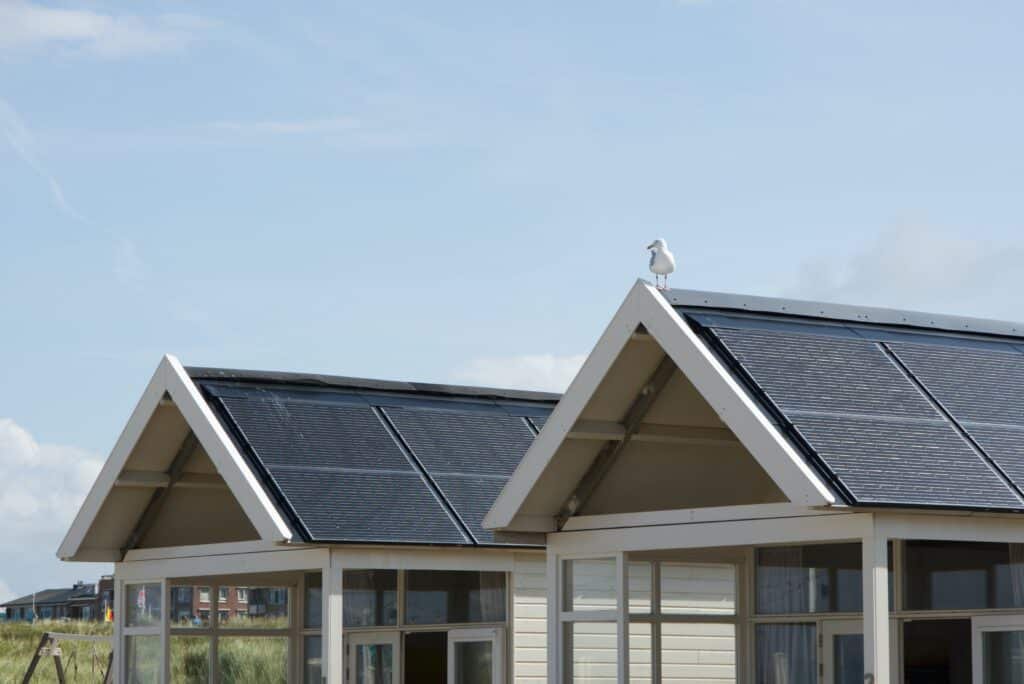
Birds can be charming to any environment, adding a touch of nature’s beauty and melody. However, when it comes to our homes and particularly our solar panels, these feathered creatures can quickly become a nuisance and even cause damage.
Solar panels offer an ideal perch for birds seeking shelter or a vantage point, but their presence can lead to many issues. Fortunately, bird-proofing techniques are available to safeguard your solar panels from unwanted avian activity.
1. Mesh Netting
Mesh netting is an excellent bird-proofing technique that can effectively deter birds from accessing the area beneath your solar panels. This method involves installing a fine mesh netting around the perimeter of the panels, creating a barrier that birds cannot penetrate. The key is to use a solar panel mesh with small enough openings to prevent birds from squeezing through or getting entangled.
The mesh netting serves as a physical barrier, blocking birds from landing, nesting, or roosting underneath the solar panels. It is particularly useful for preventing larger birds or pigeons from gaining access to these areas. By denying birds access, you can significantly reduce the chances of damage caused by nests, droppings, or debris accumulation.
2. Spikes and Wires
Another effective bird-proofing technique for solar panels is the use of spikes or needle strips. These devices are designed to make it challenging for birds to land or perch on the edges of the panels, thereby discouraging their presence.
Bird spikes are typically made of durable materials such as stainless steel or plastic, and they feature pointed protrusions along their length. These spikes create an uneven surface, making it uncomfortable for birds to land or roost on the panels. Needle strips work similarly, consisting of multiple pointed wires arranged in a row.
3. Visual Deterrents
Visual deterrents are an effective and non-intrusive bird proofing technique that can be employed alongside other methods to safeguard your solar panels. These deterrents utilize visual disturbances that birds find threatening, thus discouraging them. Some of the popular options include:
Reflective Tape
This tape is made of Mylar or other reflective materials. When attached near the solar panels, it creates flashes of light as it moves in the wind, mimicking the presence of predators. Birds perceive these reflections as a potential threat, deterring them from landing or roosting.
Scare Balloons
These inflatable balloons feature intimidating patterns or predator-like eyes. When placed near the solar panels, they create a visual disturbance that birds find unsettling. The movement and exaggerated features of scare balloons make birds wary, keeping them at a distance.
Predator Decoys
Decoys resembling predatory birds, such as owls or hawks, can be strategically placed near the solar panels. Birds recognize these decoys as potential threats and are less likely to approach the area. It is essential to periodically change the decoy’s position to prevent habituation and maintain its effectiveness.
4. Sonic Devices
Sonic devices for bird control come in different forms, such as speakers or electronic units. They are made to emit sounds specifically targeted at deterring birds while being minimally disruptive to human hearing. You can program them to be intermittent or randomized to prevent birds from habituating to the noise.
These devices take advantage of the instincts and behaviors of birds. Distress calls and predator sounds signal potential danger to birds, triggering a response that prompts them to flee the area. On the other hand, random avian alarm calls create an atmosphere of unease, making birds cautious and less likely to approach or settle near the solar panels.
5. Electric Shock Systems
An advanced bird proofing technique for solar panels involves using electric shock systems for bird control. These systems emit a mild electric shock when birds come into contact with them, effectively deterring them from landing on or near the solar panels.
Electric shock systems utilize low-voltage electrical pulses that are harmless to birds but create a startling and uncomfortable sensation. These systems are installed on surfaces where birds tend to land, perch, or roost. When a bird touches the electrified surface, it receives a brief, safe electric shock that discourages further contact. The best thing is that these systems prioritize bird safety.
How to Choose the Right Bird-Proofing Solar Panels Techniques
Choosing the ideal bird-proofing technique for solar panels depends on the specific bird infestation you are dealing with and the size of the panels. There is no one-size-fits-all solution for bird proofing solar panels. This is because different bird species may have varying behaviors and preferences, so understanding the type of birds causing the problem is essential.
Additionally, the size and layout of the solar panels will affect the feasibility and effectiveness of different bird-proofing methods. It is crucial to assess the situation and consult with professionals or experts in bird control to determine the most suitable technique for your specific circumstances.
Conclusion
And there you have it! These methods have been proven to be successful in minimizing bird-related issues, ensuring a harmonious coexistence between your renewable energy system and the surrounding avian population. By implementing these measures, you can safeguard your solar investment, enhance its longevity, and contribute to the sustainable utilization of clean energy.
